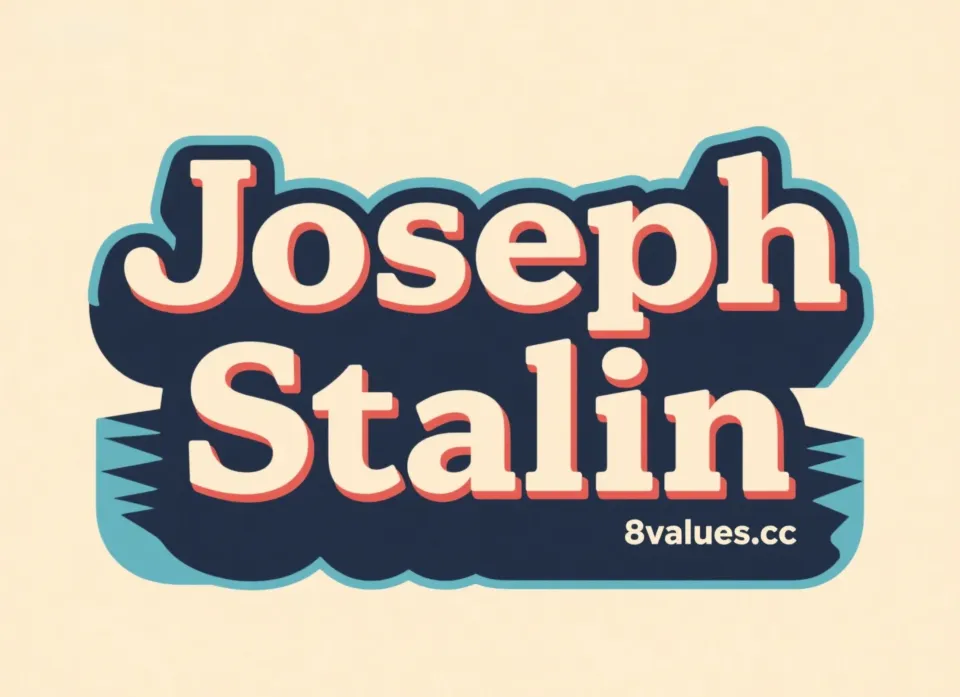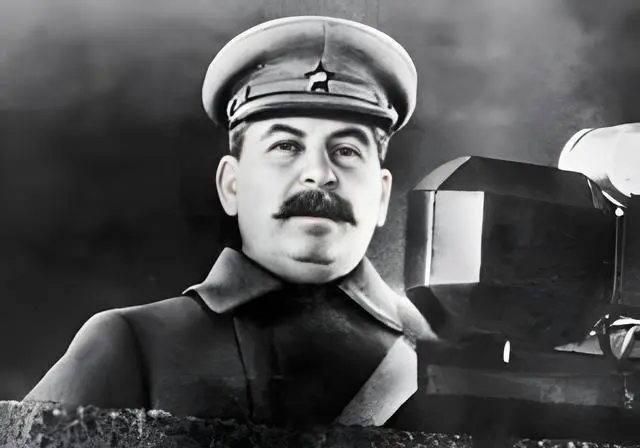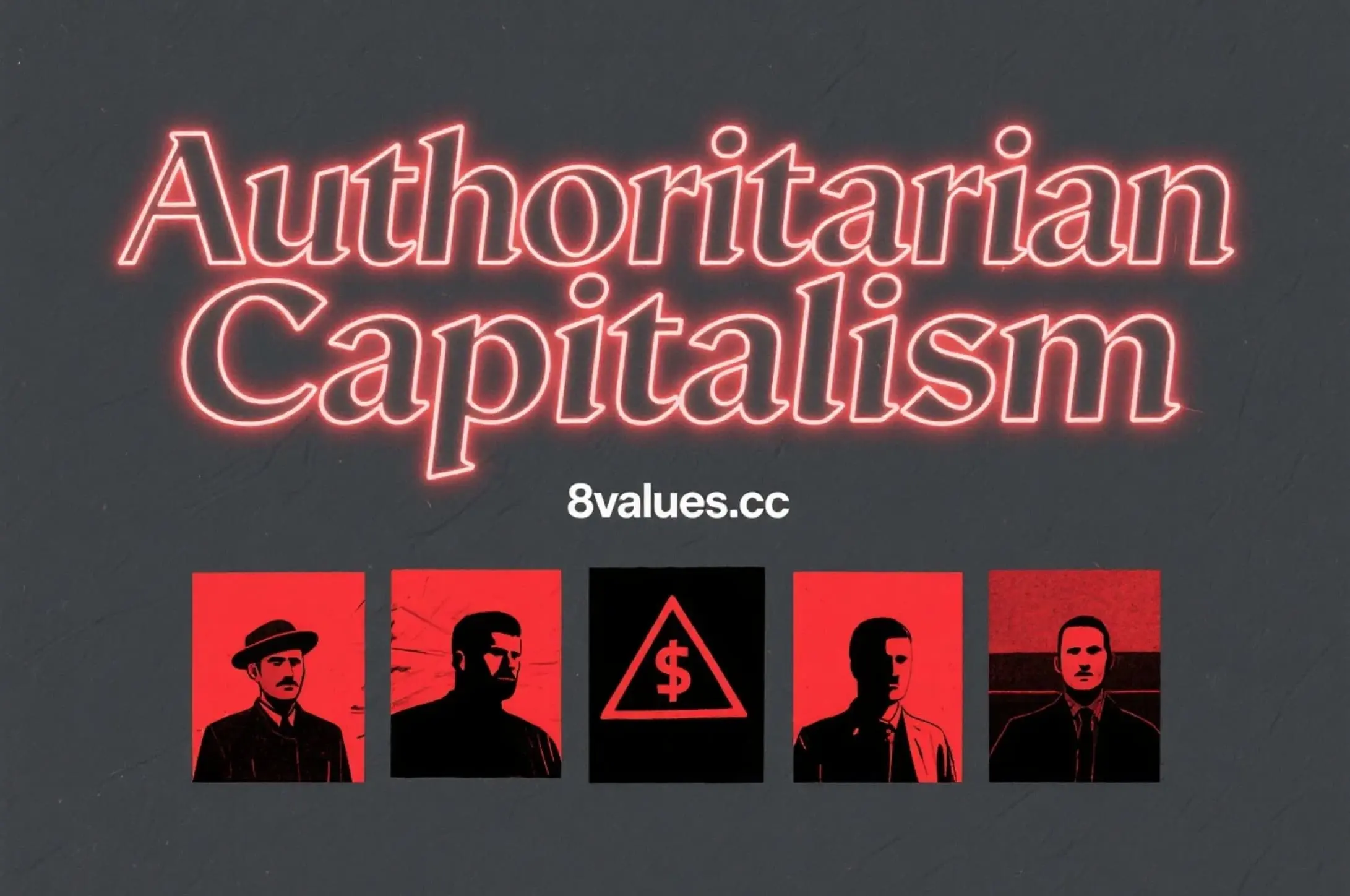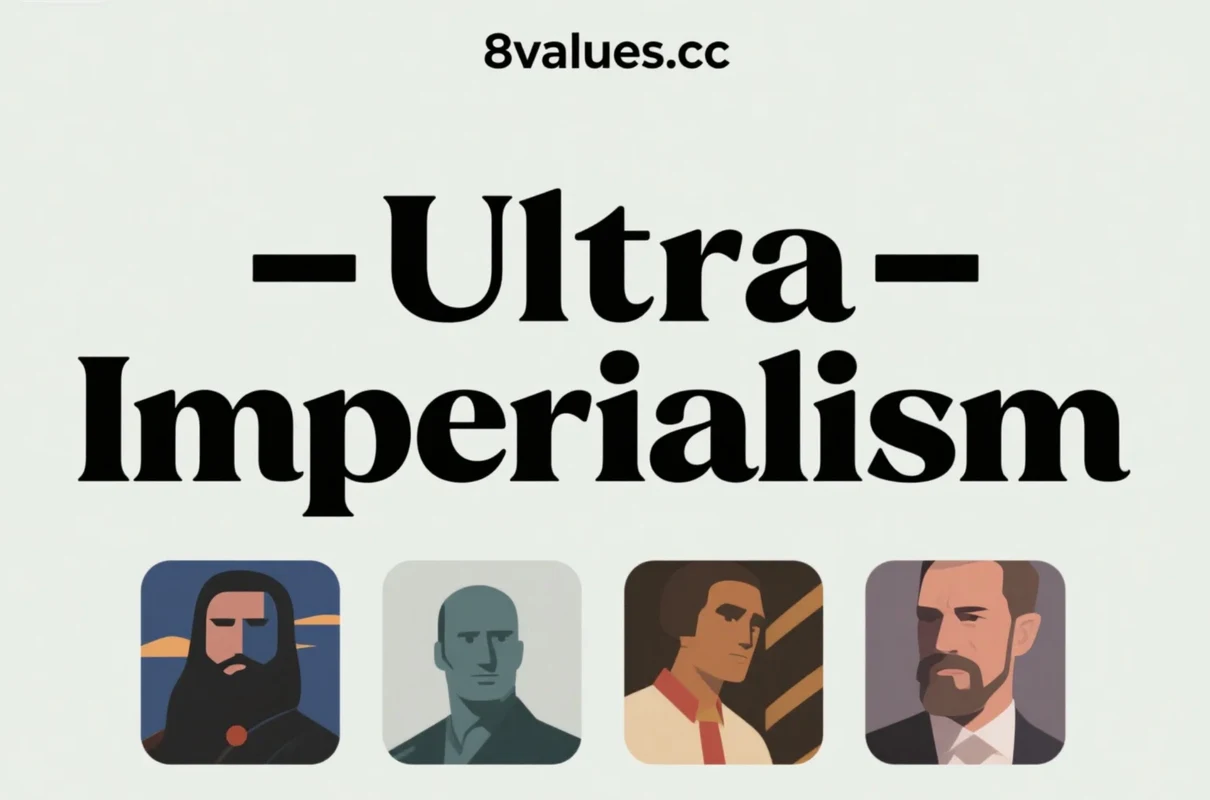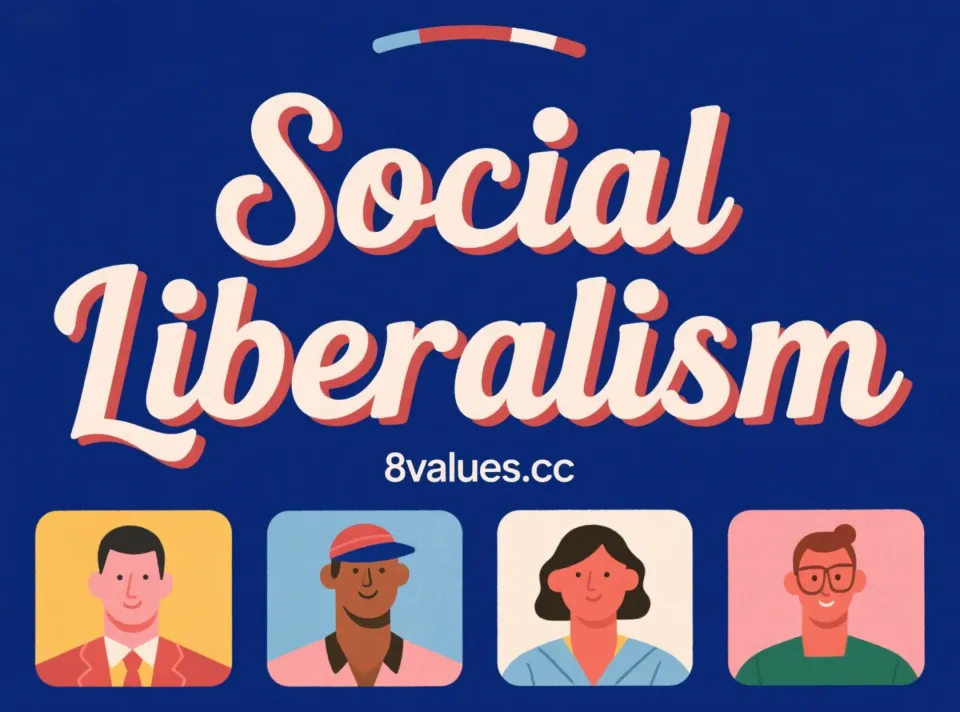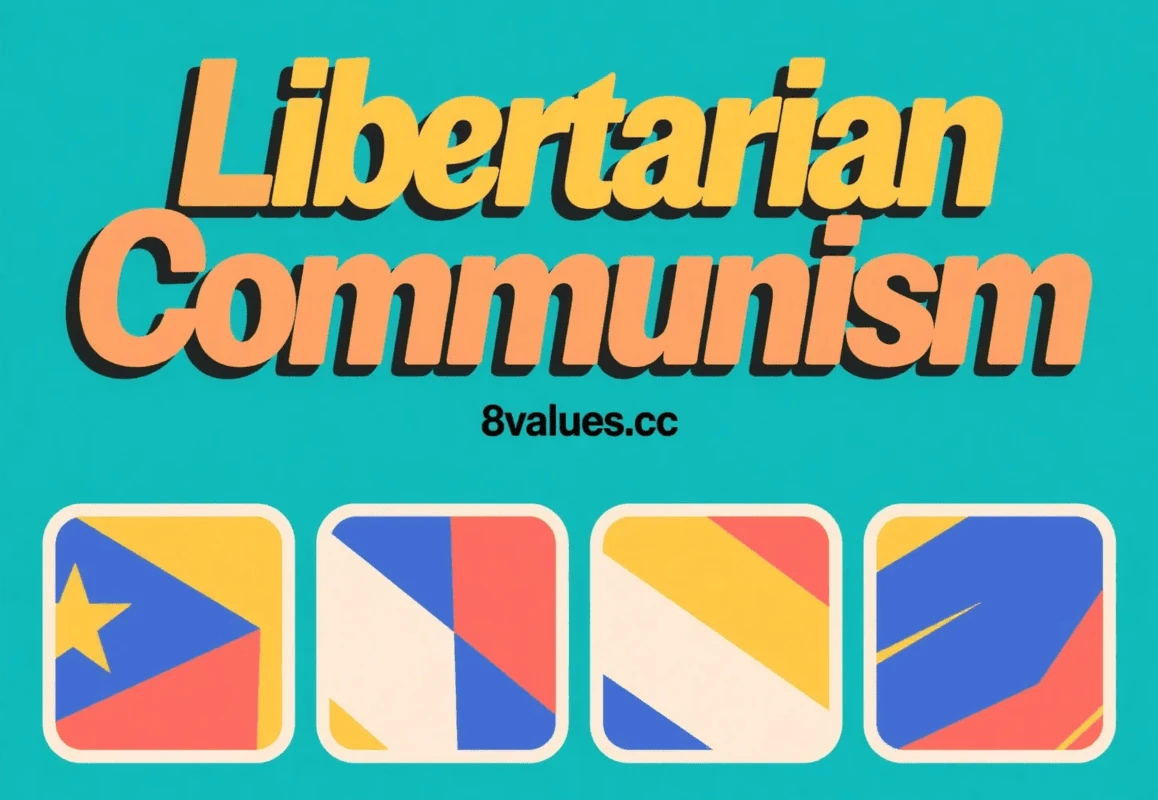Joseph Stalin: Historical interpretation of the revolutionary to the supreme leader of the Soviet Union
A deep understanding of Joseph Stalin's life, thoughts and historical evaluations. As the supreme leader of the Soviet Party and the country, Stalin led the socialist industrialization and the Patriotic War, making the Soviet Union a major heavy industry and military power, and also launched movements such as the "Great Purge". Through the 8 Values Political Values Propensity Test, explore the historical context of the Stalin era and its impact on global ideology.
Joseph Vissarionovich Stalin (Russian: Иосиф Виссарионович Сталин, English: Joseph Vissarionovich Stalin) was a Georgian who had a profound impact on the Soviet Union and the world in the twentieth century. He was both a Soviet proletarian revolutionary, politician and military strategist, and the supreme leader of the Soviet party and state (1924-1953). He led the whole Party and the people of the whole country to achieve socialist industrialization and collectivization of agriculture, making the Soviet Union a major heavy industry and military power. During World War II, Stalin led the Soviet Red Army and the Allies to work together to defeat the Axis powers and won the Soviet Patriotic War. However, his administration was accompanied by great controversy, including the Great Famine of Ukraine, the Great Famine of Kazakhstan, the establishment of personality cults, the condonation of Lisenkoism, and the launch of the "Great Purge" movement.
Stalin's early life and revolutionary path
Stalin's original name was Joseph Vissarionovich Dzhugashvili. He was born on December 18, 1878 in Gori, Tbilisi Province, Russia (some say that the official said his birthday was December 21, 1879). He was born in a humble background, the son of a shoemaker and the grandson of a serf. Stalin entered an Orthodox middle school in Tbilisi at the age of 16, and received a scholarship. During this period, he was exposed to revolutionary books and was deeply influenced by Marxism.
In 1898, Stalin joined the Russian Social Democratic Labor Party. In 1899, he was expelled from the school for his inability to pay for his tuition, and later served at the Meteorological Observatory in Tbilisi and actively participated in revolutionary activities. In 1903, the Russian Social Democratic Labor Party split, and Stalin chose to join the Bolsheviks headed by Lenin . He was arrested seven times, exiled six times for participating in revolutionary activities, and escaped five times from the exile. In March 1913, Stalin published an article "Marxism and National Issues", using the pseudonym "Stalin" (meaning "steel") for the first time to show his strong and unyielding character.
After the February Revolution in Russia in 1917 (февральская революция), Stalin was released and returned to St. Petersburg to assist Lenin in the editorial work of the Bolshevik Pravda. During the July bloodshed that same year, Stalin assisted Lenin in fleeing to Finland. In October, he was elected to the party headquarters leading the uprising and participated in the organization and leadership of the October Socialist Revolution, and the Bolsheviks finally successfully seized power.
The Road to Power and the Struggle within the Party
During the period of opposing foreign armed interference and civil war (1918-1920), Stalin served as a member of the Workers' and Peasants' National Defense Committee and a member of the Revolutionary Military Commission of the Republic. He made achievements in the battle to defend Chalizin, who was later renamed Stalingrad. During the Civil War, Stalin repeatedly defied the resolution of Trotsky, chairman of the Soviet Revolutionary Military Commission, and strengthened his influence in the army.
In April 1922, Stalin was elected as General Secretary of the Central Committee of the Communist Party of China at the first meeting of the newly elected Central Committee of the 11th Congress of the Communist Party of China. At the end of the same year, he made a report on the establishment of the Union of Soviet Socialist Republics (ссср).
On the eve of Lenin's death (December 1922), he dictated a batch of letters to the Party's fresh congress, which expressed concerns about Stalin's possession of unlimited power and suggested that comrades think of a way to transfer Stalin from the position of general secretary because he was " too rude ". Although Lenin suggested removing Stalin from his post, in 1923, Kamenev (Каменев), Zinoviev (Зиновьев) and others believed that Lenin's proposal was inappropriate and unanimously elected Stalin to continue as General Secretary.
After Lenin's death in January 1924, Stalin gradually became the main leader of the Soviet Party and the country. He put forward the claim that “ the first establishment of socialism in a country ”. In the subsequent political struggle, he first joined forces with Kamenev and Zinoviev to fight against Trotsky, denigrating "Trotskyism" as a heresy. Not long after, Stalin had disagreements with the "new opposition" formed by Kamenev and Zinoviev, and in 1927, he expelled Trotsky, Zinoviev, Kamenev and others from the party. By 1929, the Bukharin group was also expelled from the Politburo, and Stalin's status was firmly established.
Socialist construction and the establishment of the Stalin model
Industrialization and collectivization
In December 1925, the 14th National Congress of the Communist Party of China (Borough) established the general policy of socialist industrialization, aiming to transform the Soviet Union from an agricultural country to an industrial country centered on heavy industry. During the implementation of the first two five-year plans (from 1928), the Soviet Union formed a relatively complete industrial system and realized national industrialization. By 1940, the Soviet Union's steel, coal, oil and electricity production reached new highs, and it had become the world's third-strongest industrial country after the United States and Germany.
At the same time, in December 1927, the 15th National Congress of the Communist Party of China (Bolshevikia) established the policy of collectivization of agriculture (коллективизация сельского хозяства) in December 1927. The campaign aims to unite and transform individual small peasant economies into large-scale collective economies in order to provide funding and food for industrialization. However, there are serious mistakes in the agricultural collectivization movement, including violation of farmers' willingness to join voluntarily, excessive behavior towards rich peasants (кулак) policies, and excessive funds are collected from farmers, which seriously damages farmers' production enthusiasm. For example, during the agricultural collectivization movement, the state implemented a voluntary delivery system , which caused excessive burdens among farmers and negative resistance, which eventually led to severe famines in the vast areas of the Soviet Union from 1932 to 1933, of which about 2.2 million people in Ukraine were starved to death.
A highly centralized political and economic system
The promulgation of the new constitution in 1936 marked the establishment of the basic socialist system in the Soviet Union, and also marked the formation of a highly centralized political and economic system (i.e., the "Stalin model") created by Stalin. The characteristics of this model include: economic management with administrative orders, negating the law of value, excluding commodities and markets; politically, the power is highly concentrated, the party and government are inseparable, the lack of mass supervision, and the neglect of democracy and the legal system.
Although the Stalin model played an important role during the war and during the recovery of the national economy, its serious flaws and disadvantages later increasingly hindered the development of the Soviet national economy and various undertakings. This system of planning that emphasizes national interests first will ultimately hinder positive and open development and lead to the lack of vitality of the Soviet Union in international competition. If you are interested in economic and social development under different political systems, you can explore the focus of different ideologies on the economic dimension through the 8values political test .
Stalin: Great Purgatory and Cult of Personality
With the firm establishment of Stalin's status, his personal cult reached a considerable level. This cult of personality was reflected in the late period of his reign, and Stalin even began to like this cult, so that his works or his name must be cited on various occasions. In order to improve the image, some painters even painted with elevation angle to make the short Stalin look like a giant, and specially invented a special "height-enhancing shoe" for him.
While personality cults were prevalent, the Soviet Union experienced what was known as the "Great Purge" (or the "Great Horror" period) from 1937 to 1938. This large-scale anti-counterfeiting campaign began with the assassination of Sergey Kirov in 1934. During this period, about 1.3 million people were sentenced, of which 682,000 were shot .
The Great Purge not only targeted political oppositions (such as the old Bolsheviks during the Lenin period), but also affected outstanding leaders of the Party, government and military, famous intellectuals, ordinary cadres and the masses. For example, two-thirds of the members of the Party Central Committee during the October Revolution were executed. More than 40,000 of the Red Army commanders and political workers were purged, including 3 of the five marshals.
In the fields of science and culture, many famous scientists and experts have not been spared. For example, breeder Vavelov, aircraft designer Tupolev, Langemak, the inventor of the Katyusha rocket launcher, and Korolev, the chief designer of the first artificial satellite in the Soviet Union, were all executed or arrested. Stalin himself emphasized in 1939 that the purge was to “eliminate the enemy of the people”, and despite admitting serious mistakes, he believed that purge was inevitable and “basically produced good results.”
The Supreme Commander in World War II
In June 1941, after Nazi Germany tore up the Soviet Union's "Barbarossa Plan" to launch a blitzkrieg attack on the Soviet Union, Stalin served as chairman of the Soviet Defense Commission and supreme commander of the Soviet armed forces. Although he had not made sufficient preparations for his belief that Germany would not attack the Soviet Union before defeating Britain, the Soviet army suffered heavy losses in the early stages.
At the critical moment of the Patriotic War, Stalin demonstrated his tenacious will and military leadership. When the German army approached Moscow in November 1941, he firmly stayed in the city to organize a counterattack and held a military parade on Red Square, which greatly boosted the morale of the Soviet military and civilians.
In the Battle of Stalingrad, the Soviet army fought fiercely for 200 days and killed 1.5 million enemies. This battle is considered to be the turning point of World War II . Under Stalin's outstanding command, the Soviet army eventually won a series of victories, including the Battle of Kursk, driving the German army out of the Soviet Union. He led the Soviet people and eventually defeated Nazi Germany. British Prime Minister Winston Churchill once commented on Stalin: " Fortunately for Russia, in the era when she was facing difficult tests, she was led by the talented and tenacious commander Joseph Stalin. "
In terms of international diplomacy, Stalin participated in several important summits of the allies, including the Tehran Conference and the Yalta Conference, and reached an agreement on the conditions for combat against Japan. In August 1945, the Soviet Red Army sent troops to Northeast China and quickly defeated the Japanese Kwantung Army.
Death in his later years and the conclusion of history
After the end of World War II, Joseph Stalin built a series of satellite countries in the occupied Eastern Europe and formed the Socialist Bloc headed by the Soviet Union.
On March 5, 1953, Stalin died of cerebral hemorrhage in Moscow at the age of 74. Although the cause of his death was controversial, the autopsy report showed that Stalin died naturally.
After Stalin's death, his body was initially placed side by side in Lenin's tomb on Red Square in Moscow. However, in view of his serious violation of Lenin's will, abuse of power, and extensive suppression, in 1961, the 22nd Congress of the Communist Party of the Soviet Union passed a resolution to remove Stalin's body from Lenin's tomb and buried under the red wall of the Kremlin.
In 1956, Khrushchev made a secret report at the 20th National Congress of the Communist Party of the Soviet Union, revealing Stalin's mistakes in the 1930s, his personality cult, and his mistakes in the early stages of the war.
Historical evaluations about Stalin are complex and contradictory. Russian President Putin once pointed out that the country changed from an agricultural country to an industrial country in the Stalin era, which was a positive achievement, but the price was unacceptable . He stressed: "There is no doubt that during this period we encounter not only simple cults of personality, but large-scale crimes against our own people. This is also a fact." Churchill concluded: " He took over a backward Russia planted by plowing hands, while what he left was the Soviet Union equipped with atomic weapons. "
Stalin's philosophical thoughts belong to part of Marxist philosophy. He adhered to the principle of party spirit and theory in connection with practice in Marxist philosophy. In terms of military theory, Stalin proposed military theories such as the fate of war determined by factors that often work according to new historical conditions, and emphasized that modern combat art lies in mastering all forms of war and scientific achievements, and is good at rational use.
_ Brief description of Stalin's personal life: _ Stalin married his first wife Ekaterina Svanidze in 1904. She died in 1907. They had a son, Yakov Dzhugashvili, who was captured and sacrificed by the German army during World War II. In 1919, Stalin married his second wife, Nadezhda Alliluyeva, and had a son Vasily Dzhugashvili and his daughter Svetlana Alliluyeva. Nadzeda committed suicide in 1932. Vasily later became a major general of the Soviet Air Force, but Stalin was arrested and sentenced after his death.
